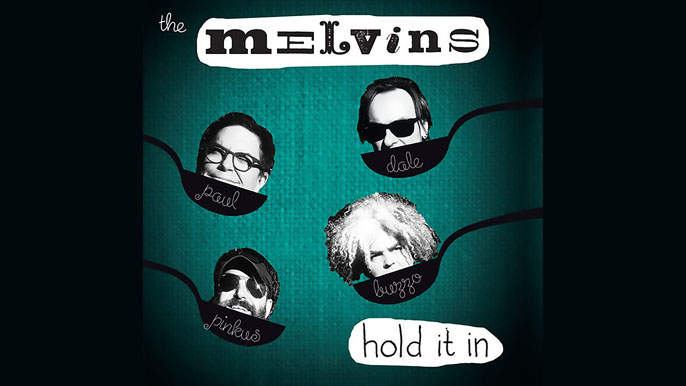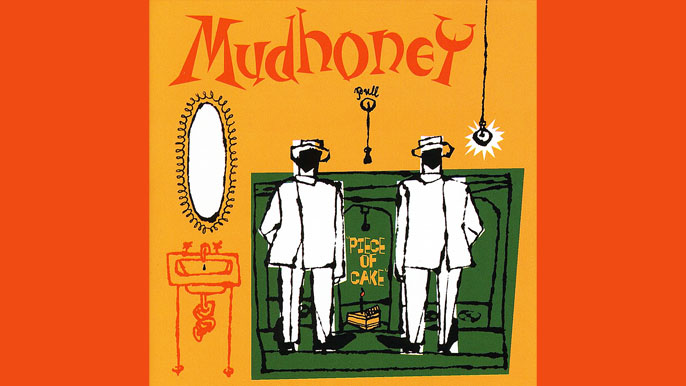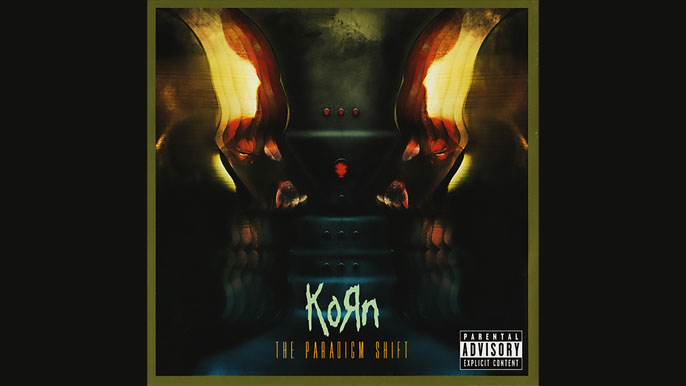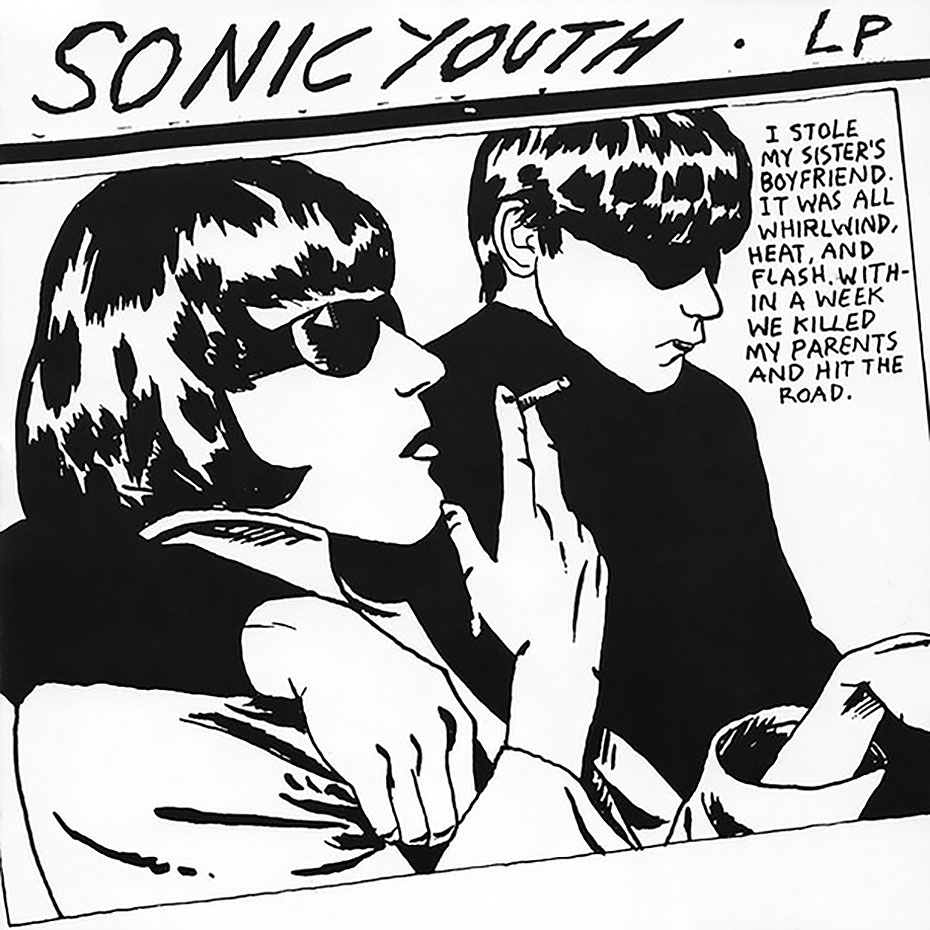
Goo is the sixth studio album by Sonic Youth, released on June 26, 1990, by DGC Records. For this album, the band sought to expand upon its trademark alternating guitar arrangements and the layered sound of their previous album Daydream Nation (1988) with songwriting on that was more topical than past works, exploring themes of female empowerment and pop culture. Coming off the success of Daydream Nation, Nick Sansano returned to engineer Goo, but veteran producer Ron Saint Germain was chosen by Sonic Youth to finish mixing the album following Sansano‘s dismissal.
Goo was a critical and commercial success upon its release, peaking at number 96 on the US Billboard 200, their highest chart position to date. Although it lacked significant radio airplay, its lead single Kool Thing, a collaborative effort with Public Enemy‘s Chuck D, reached number seven on the Billboard Modern Rock Tracks chart.
Since then, Goo has been viewed as one of alternative rock’s most important albums, and is considered musically and artistically significant. In 2020, the album was ranked at number 358 on Rolling Stone’s 500 greatest albums of all time list.
Goo was released by DGC Records on June 26, 1990. The album’s front cover design was created by Raymond Pettibon, who was responsible for early covers for Black Flag. Instead of his original Joan Crawford sketch, Sonic Youth chose another Pettibon design: an illustration of two sunglasses-wearing British mods, based on a photograph of Maureen Hindley and David Smith, two witnesses in the Moors murders trial.
Although Geffen pushed for a mainstream market, the label also was concerned about alienating Sonic Youth‘s original fan base. This prompted Geffen executive Mark Kates to attempt grassroots promotional tactics. In promoting Goo, Kates arranged for the band to visit college radio stations and music journalists weeks leading up to the album’s release.
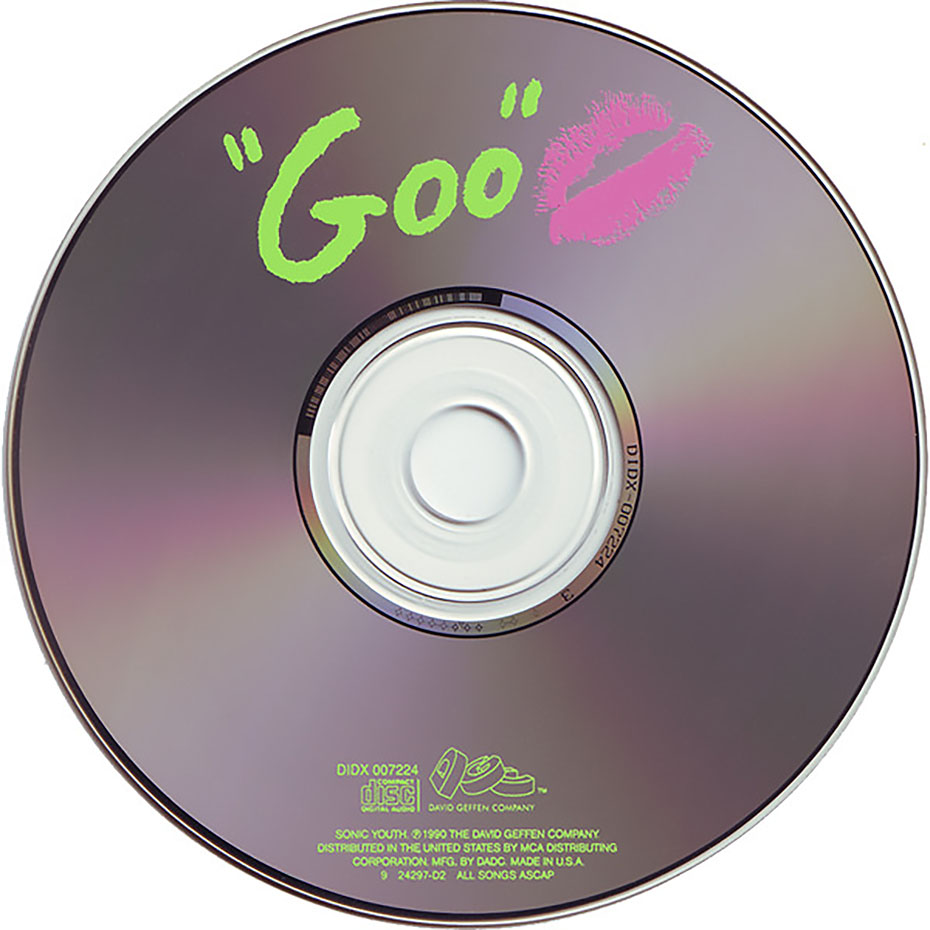
Tracklist:
- Dirty Boots
- Tunic (Song for Karen)
- Mary-Christ
- Kool Thing
- Mote
- My Friend Goo
- Disappearer
- Mildred Pierce
- Cinderella’s Big Score
- Scooter + Jinx
- Titanium Exposé
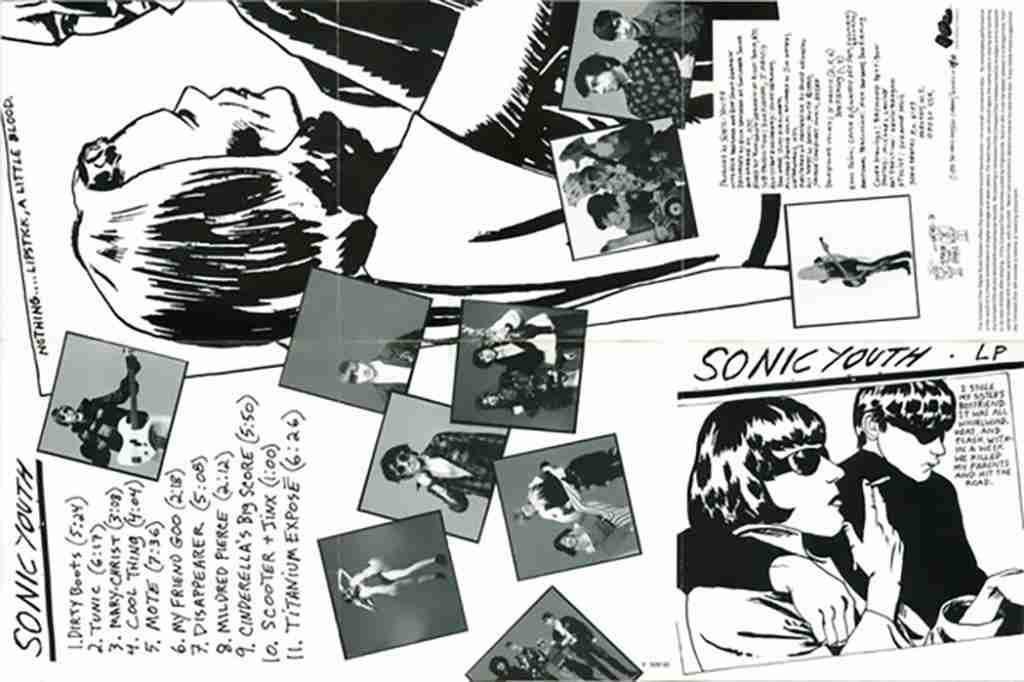
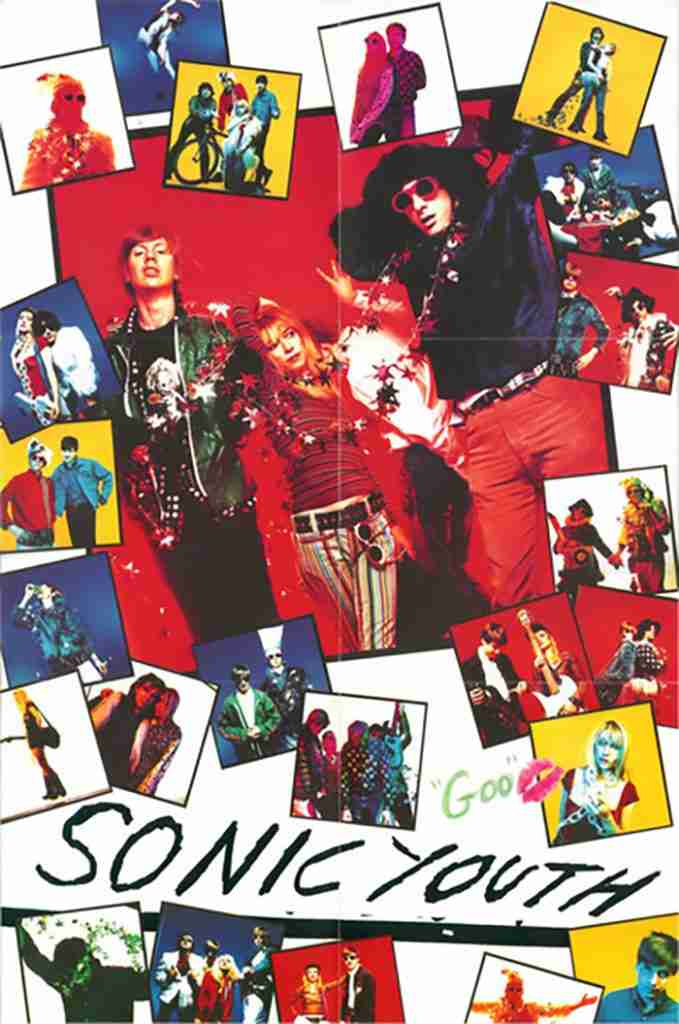
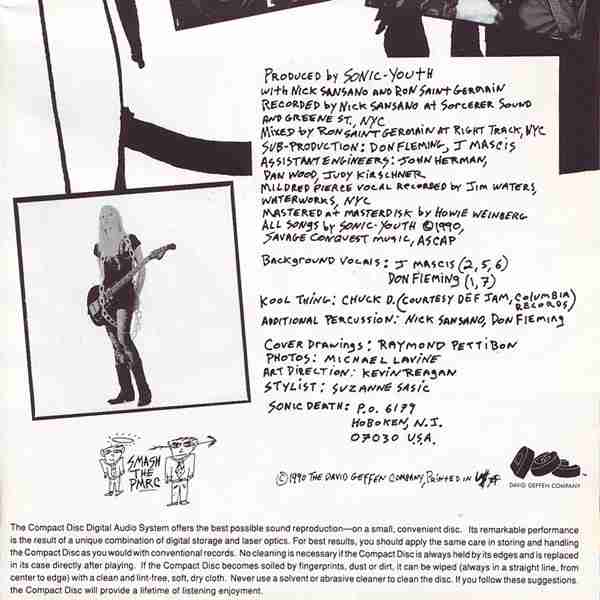
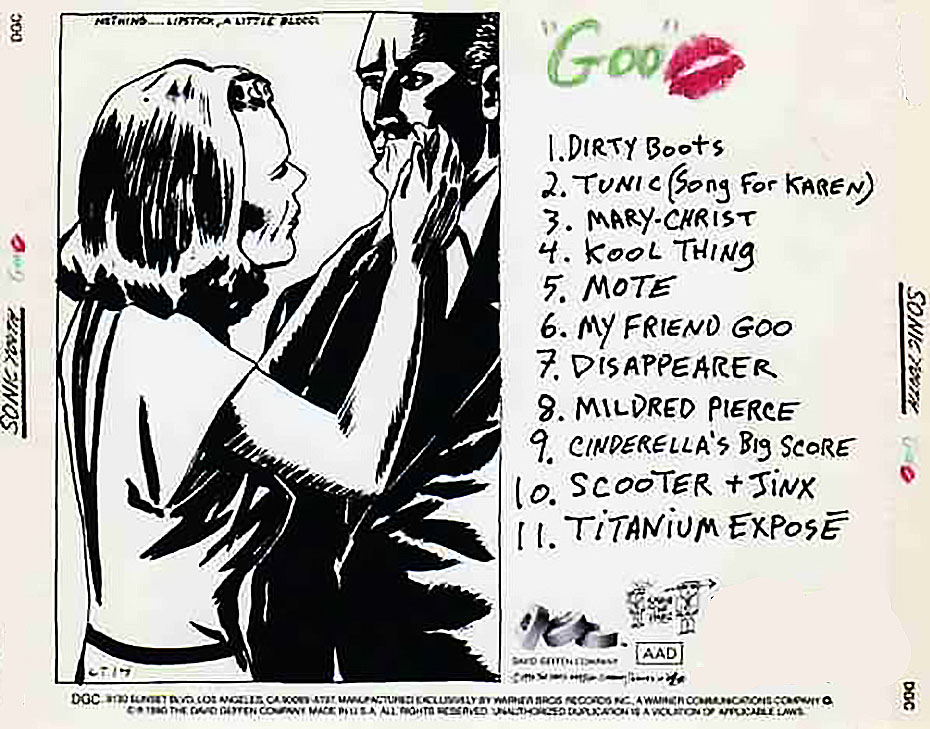
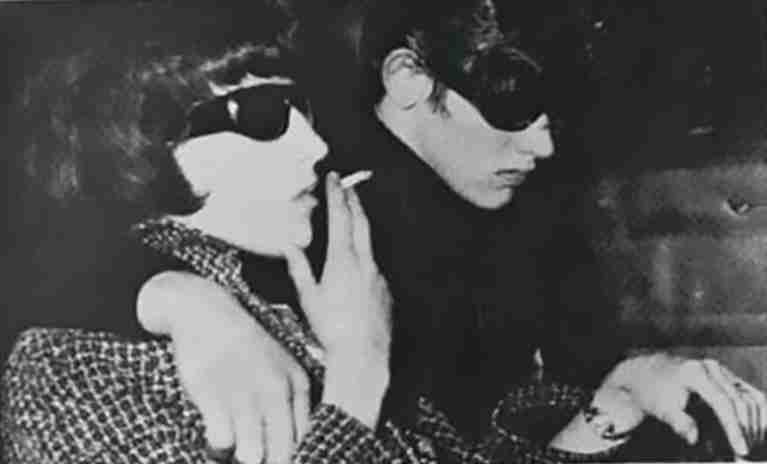
The Moors murders were carried out by Ian Brady and Myra Hindley between July 1963 and October 1965, in and around Manchester, England. The victims were five children Pauline Reade, John Kilbride, Keith Bennett, Lesley Ann Downey, and Edward Evans aged between 10 and 17, at least four of whom were sexually assaulted. The bodies of two of the victims were discovered in 1965, in graves dug on Saddleworth Moor; a third grave was discovered there in 1987, more than twenty years after Brady and Hindley’s trial. Bennett’s body is also thought to be buried there, but despite repeated searches it remains undiscovered.
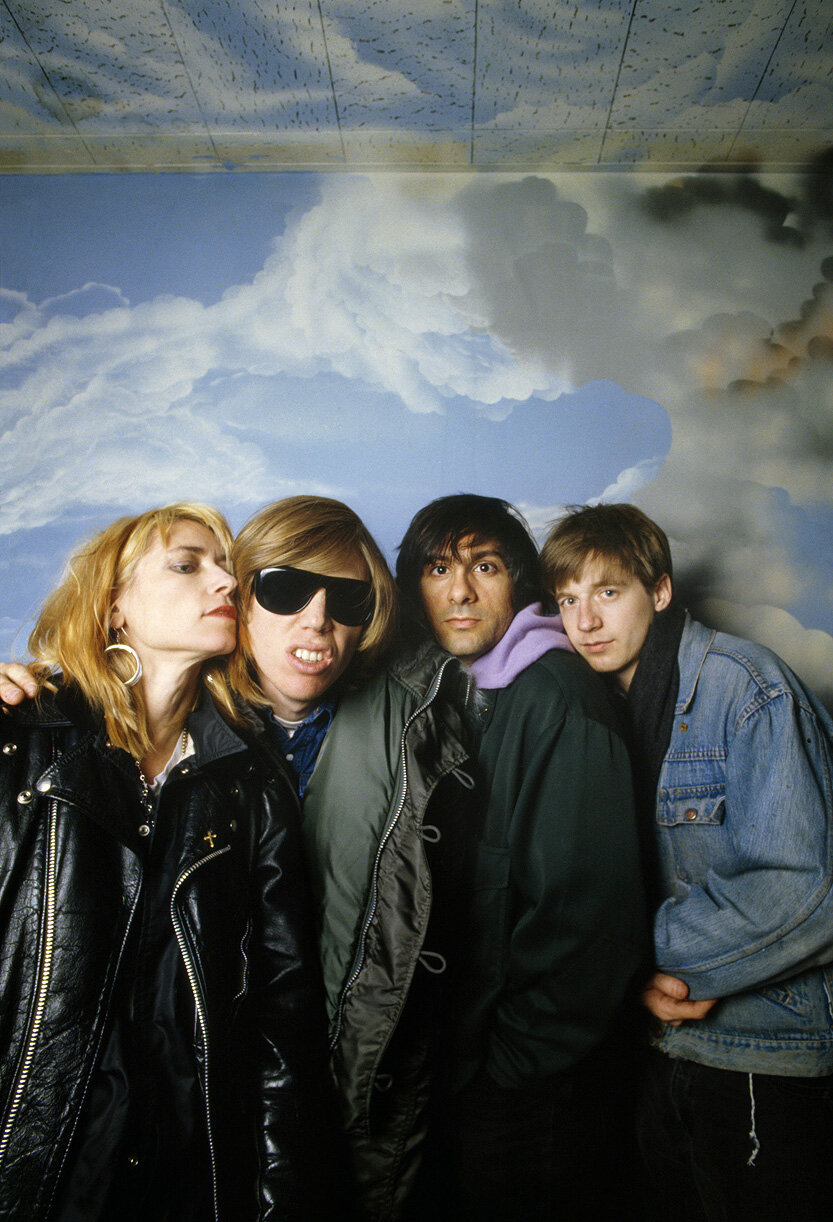
Sonic Youth
Thurston Moore: vocals, guitar, production, bass (track 6)
Lee Ranaldo: guitar, vocals, production
Kim Gordon: vocals, bass guitar, production
Steve Shelley: drums, percussion, production
Guest musicians
J Mascis: backing vocals (tracks 2, 5 and 6), additional production
Don Fleming: backing vocals (tracks 1 and 7), additional production, additional percussion
Chuck D: additional vocals (track 4)
Design
Kevin Reagan: art direction
Suzanne Sasic: artwork
Raymond Pettibon: cover illustration
Michael Lavine: sleeve photography
Technical
Nick Sansano: production, recording, additional percussion
Ron Saint Germain: production, engineering, mixing
Nick Sansano: additional engineering
Dan Wood: assistant engineering
John Herman: assistant engineering
Judy Kirschner: assistant engineering
Howie Weinberg: mastering
Jim Waters: additional recording (track 8)




